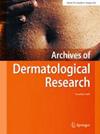摘要
中毒性表皮坏死(TEN)是一种严重且可能致命的皮肤反应,通常与使用多种药物有关。鉴于 TEN 的严重性和潜在的高致死率,识别高风险药物对于提高临床用药安全至关重要。我们采用报告几率比(ROR)来评估 FAERS 数据库中 2004 年第一季度至 2024 年第三季度与药物相关的 TEN 报告。采用单变量分析、LASSO 回归和多变量逻辑回归来探讨与药物引起的 TEN 相关的风险因素。多重比较采用 Bonferroni 校正。共发现218种药物与TEN有关,包括抗惊厥药(26/218)、抗生素(54/218)、非甾体抗炎药(12/218)、抗肿瘤药(3/218)和免疫调节药(8/218)。多变量回归分析显示,37-66 岁年龄组以及 26 种特定药物(包括拉莫三嗪、苯妥英、卡马西平、环丙沙星、磺胺甲噁唑和阿莫西林)可能是药物诱发 TEN 的危险因素。这些研究结果为临床医生早期识别药物诱发的 TEN 提供了宝贵的见解,并为未来的药物安全性评估和个性化治疗策略提供了理论基础。由于比例失调分析的固有局限性,目前与 TEN 相关的药物研究结果具有一定的不确定性。未来的研究可以利用更先进、更严谨的研究方法,认真探讨药物与TEN之间的因果关系。

Toxic epidermal necrolysis (TEN) is a severe and potentially fatal skin reaction often associated with the use of multiple medications. Given the severity and potentially high fatality rate of TEN, identifying high-risk drugs is essential for improving clinical medication safety. The reporting odds ratio (ROR) was used to assess drug-related TEN reports in the FAERS database between Q1 2004 and Q3 2024. Univariate analysis, LASSO regression, and multivariate logistic regression were employed to explore the risk factors associated with drug-induced TEN. Bonferroni correction was applied for multiple comparisons. A total of 218 drugs were identified as being associated with TEN, including anticonvulsants (26/218), antibiotics (54/218), non-steroidal anti-inflammatory drugs (12/218), antineoplastic agents (3/218), and immunomodulatory drugs (8/218). Multivariate regression analysis revealed that the age group 37–66 years, as well as 26 specific drugs, including lamotrigine, phenytoin, carbamazepine, ciprofloxacin, sulfamethoxazole, and amoxicillin, might be risk factors factors for drug-induced TEN. These findings provide valuable insights to assist clinicians in early identification of drug-induced TEN, and offer a theoretical foundation for future drug safety evaluations and personalized treatment strategies.Constrained by the inherent limitations of disproportionality analysis, the current research findings on drugs related to TEN have a certain degree of uncertainty. Future research can utilize more advanced and rigorous research methods to earnestly explore the causal relationship between drugs and TEN.

 求助内容:
求助内容: 应助结果提醒方式:
应助结果提醒方式:


